BLOG
|
FOR BONE STRENGTH SPECIFIC DETAILS MATTERTHE HARVARD MEDICAL SCHOOL SPECIAL HEALTH REPORT, “OSTEOPOROSIS” that I recently purchased is more than 50 pages in length. The publication begins by explaining the “basics of bone”, then goes on to discuss the causes, risk factors, and consequences of the disease, among many other topics. There are three sections that deal with bone protection: nutrition, exercise, and medication.
What surprised me is that, in addition to explaining the importance of consuming adequate amounts of calcium and Vitamin D each day to building and maintaining healthy bones, Vitamin K was included as a nutrient contributing to bone health. This vitamin has been of interest to me for almost 3 years, especially Vitamin K2. I ‘discovered’ it while searching the scientific literature for ways to help my personal health situation, living with osteopenia and osteoporosis since the age of about 51 years. In my understanding from reading on the topic, vitamin K1 (phylloquinone)and K2 (menaquinone) are different nutrients by several parameters: 1. Dietary Sources: Vit K1 -Green leafy plants (esp. spinach, cabbage, kale), vegetables (Brussel sprouts, asparagus, cabbage), some fruits (avocado, kiwi, grapes) Vit K2 -Produced through bacterial conversion of Vit K1 in the gut of animals that consume plants containing Vit K1 where it is then converted to Vit K2 - Meats (esp. chicken), eggs, and dairy foods (esp. hard cheeses) of pasture animals (grass fed, not corn/grain fed goats, etc.) - Foods fermented by bacteria that convert Vit K1 to Vit K2, like the fermented soybean product, natto, and sauerkraut 2. Storage/Distribution within the body: Vit K1 Stored inside the liver (site of coagulation factor production) Vit K2 Distributed widely in tissues outside the liver (extra-hepatic tissues) 3. Biological function in the human body: Vit K1 -Synthesis of blood coagulation/clotting factors II, VII, IX, X, - and anti-coagulation proteins C, S, and Z Vit K2 -Protection against pathological inflammation -Synthesis of osteocalcin and other proteins that protect against pathological calcification/mineralization of blood vessel (vascular) tissue and other soft (non-bone) tissues -New roles being investigated: “anti-oxidant”, “promoter of cognition”, inhibitor of tumor progression, and regulator of bone-building genes The Harvard report indicates that Vitamin K, which is present “in leafy greens”, may assist with strengthening bones by helping the body “produce osteocalcin, a protein that is instrumental in bone formation”, blocking substances that break it down, and regulating urinary calcium loss. Not much effort is made to distinguish between Vitamin K1 and Vitamin K2 or it’s different dietary sources except in the instance noted below regarding fracture risk. The report cites a) a review in which 7 of 13 studies on the subject, all involving Japanese people, showed reduced fracture risk in those taking Vitamin K2 , and b) the Nurses’ Health Study and the Framingham Heart Study, both of which showed a decreased risk of hip fracture in those who consumed Vitamin K in greater amounts. Readers are assured that most diets can adequately supply Vitamin K if they contain vegetables like raw spinach, cooked broccoli or Brussels sprouts, collard greens, scallion, asparagus, cabbage, and certain herbs (basil, thyme, sage). There is no mention of animal sources of K2. Fortunately, the US National Institutes of Health Office of Dietary Supplements website also provides information on the role of Vitamin K in bone health but separately discusses K1 and K2 and their dietary sources, identified as leafy green vegetables (K1) and foods of animal origin and fermented foods (K2). In spite of the erratic reporting on specific Vitamin K types in health information, there is a noticeable effort to raise awareness of the potential importance of this nutritional factor to bone health. Some sources now make the effort to explain the differences in Vit K1 and Vit K2 and a few identify the different forms of K2 (usually MK-4 and MK-7). Remarkably, research studies in the past have not always made the distinction either. Future research will hopefully shed more light on the roles Vitamin K1 and K2 play in bone and other areas of health. Check out the linked/referenced articles if you wish to learn more. One thing is certain, although these two vitamins share similar chemical structures and names, they have different dietary sources for humans. Earned Runs predicts that Vitamin K, especially Vit K2, will be the next big “new” health story to grab headlines in 2020 because of advances in understanding of certain aspects of cardiovascular disease, bone health and disease, cancer, and inflammation leading to aging-related conditions. Last January (2019) a review article in the International Journal of Molecular Sciences, “Vitamin K: Double Bonds Beyond Coagulation Insights into Differences between Vitamin K1 and K2 In Health and Disease” identifies itself as “ the first to highlight differences between isoforms K1 and K2 by means of source, function and extra-hepatic activity.” The organ systems pictured at the article’s end, in which Vit K2 is identified as playing a protective role, include brain, bone, heart and blood vessels, kidney, liver, pancreas, and fat tissue. It further declares that “Vitamin K2, in the form of MK-7 has been shown to be a bioactive compound in regulating osteoporosis, atherosclerosis, cancer and inflammatory disease. A scientific article in the November 2019 journal issue Gynecological Endocrinology, “Role of Vitamin K2 in Bone Metabolism: a Point of View and a Short Re-appraisal of the Literature” focuses on this nutrient’s potential role in limiting bone loss and in boosting existing therapies for osteoporosis, especially combined with adequate intakes of calcium and Vitamin D. Most recently, in January 2020, the journal Nutrients published the article “Vitamin K as a Diet Supplement with Impact in Human Health: Current Evidence in Age-Related Diseases”. It discusses Vitamin K in general and Vitamins K1 and K2 separately, particularly in terms of absorption, bioavailability, storage and targets. The review article begins with an explanation of why the nutrient is worth investigating fully. “Vitamin K health benefits have been recently widely shown to extend beyond blood homeostasis and implicated in chronic low-grade inflammatory diseases such as cardiovascular disease, osteoarthritis, dementia, cognitive impairment, mobility disability, and frailty. Excitement about Vit K and especially K2 may also be running rather high because, as the International Journal of Molecular Sciences piece (freely available for download) indicates, it has not been shown to cause toxicity, harmful side effects, or risk of overdosing. Athletes might be excited about Vit K2 because of its potential impact on bone health, possibly helping to lessen or delay the onset of joint degeneration in osteoarthritis and bone loss in osteopenia/osteoporosis. Another reason to take note of investigations into this nutrient is the possibility It may offer protection against abnormal coronary artery calcification that has been noted to occur in a subset of aging endurance athletes. With such encouraging news from the scientific community, we might expect to see Vitamin K receive more attention from popular media sources. To be accurately informed, pay attention to the specifics. RUN & MOVE HAPPY! NOTE: Importantly, Vitamin K reports provide humans with additional reasons to fill their plates with dark -colored ‘greens’ that include collards, turnip greens, broccoli, and kale, and other vegetables and fruits that serve as good sources of Vitamin K1. AND we now have additional incentives to enjoy chicken, eggs, ground beef, ham, cheese, and milk as sources of Vitamin K2. https://www.ncbi.nlm.nih.gov/pubmed/30791399 https://doi.org/10.1080/09513590.2019.1689554 https://www.ncbi.nlm.nih.gov/pubmed/31947821 https://www.ahajournals.org/doi/full/10.1161/circulationaha.117.028750 https://www.runnersworld.com/health-injuries/a20857967/heres-the-latest-on-whether-running-hardens-your-arteries/
0 Comments
ELIMINATING ALCOHOLIC BEVERAGES FOR THE OPENING MONTH OF THE YEAR is an effort many athletes think about making to boost sport or training performance. An article in outsideonline.com suggests that doing so probably won’t transform an ordinary athlete into an elite one but may help improve other aspects of life: losing weight, saving money, and sleeping better.
Whether or not you spent January sober, the question arises as to how alcohol drinking might be handled in February. If abstinence left you eagerly awaiting the opportunity to loosen up once the calendar date permits but falling back into old habits doesn’t seem to be a healthy course of action, Lauren Bravo has an alternative: commit to limiting yourself to just one drink. Her article, “How to Become a One Drink Wonder”, for Refinery29.com, outlines and explains 10 steps toward accomplishing this goal. Bravo’s tips are creative and practical; you’ll need to read the article itself because to outline them secondhand here would be unfair to her. However, I will share the one tip Bravo explained that I thought would be most helpful to me. It’s No.6, “Eating Isn’t Cheating”, which suggests enjoying a drink before eating but not continuing through dinner. Those who have tried to hold to a predetermined budget at a pricey restaurant will be familiar with this tactic. Savoring a single cocktail or glass of wine over the entire meal experience is a sure way contain cost. Bravo’s setting the time for stopping when the meal arrives is a terrific idea for those of us who appreciate a clear boundary. Alcoholic beverages aren’t true health drinks but the social gatherings in which we have an opportunity to safely enjoy them might contribute to a healthy life. If teetotalling isn’t an objective, limiting drinks to one per day fits with health experts guidelines and seems do-able long-term. RUN & MOVE HAPPY! https://www.outsideonline.com/2147006/can-dry-january-make-you-better-athlete https://www.refinery29.com/en-gb/alcohol-moderation-tips https://www.cdc.gov/alcohol/fact-sheets/moderate-drinking.htm 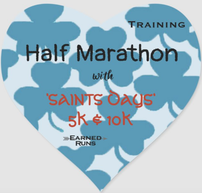 WITH 'SAINTS DAYS' 5K & 10K RACES TRAINING STARTS RUN PLAN: You may become more aware of the progress you are making in training after finishing two weeks of training. If you feel comfortable with the schedule, plan ahead to take advantage of the optional Tuesday run + hill workout discussed in last week’s blog post, especially if January weather takes a turn toward very cold and snowy. Use the upcoming weeks to locate an incline that takes about 1.5 minutes to climb at a slow to moderate pace with moderate intensity, and about 2 minutes to descend at a walk. Three repeats will add just 10.5 minutes to your initial 2-mile warm-up run; 4 repeats will add roughly 14 minutes. In cold and wet weather, hill repeats can be an affordable way for those without a fitness center membership to maintain intensity of this workout at a higher level in spite of unfavorable outdoor conditions. Especially if you are able to drive and park or work/live near the “hill” (multi-level parking ramp or actual hill). There’s a short initial 2-mile warm-up distance to cover that can be accomplished as around-the-block or out-and- back loops that end at the training ‘hill’. A good reason to find a convenient covered parking ramp for hill repeats instead of a real outdoor hill is that you’ll lessen your exposure to the elements running under the top level. Stick to the plan’s number of repeats until you know your tolerance to hill work. You might wish to progressively increase the repeats by one hill climb each week to 6-8. but not to the point it imapcts your readiness to increase mileage on the long run day. Want to perform hill repeats indoors? Stair climbing and treadmill incline running can substitute for hill climbing, some trainers advise. Others warn against this type of repetitive training. Best to check with your doctor if you have been seen or treated for joint or skeletal problems before working out on stairs or hills. An article posted on runsociety.com offers formulas for calculating an appropriate number of stair flights.] WALK PLAN: As discussed for runners, prepare now to find an incline for a hill workout. The walk plan hill repeats are first scheduled in week 6 so there’s plenty of time to investigate and plan ahead before starting. It’s also a good idea to obtain medical clearance for these activities if you have had joint/skeletal problems in the past. Warmup by walking for 20 minutes on a flat stretch, walk up then down on an incline that takes about 2 minutes to climb then 2 minutes to descend. Three to 4 cycles of uphill-downhill repeats will take about 12-16 minutes. After a 5-minute cool-down walk, you are finished! Both runner and walker plans (below) are also on the RESOURCES page: Just think, the days are getting longer and you are getting stronger, especially if you are performing the lower and upper body strength work of each week’s plan and the dynamic warm-ups. RUN & MOVE HAPPY! https://www.livestrong.com/article/476957-running-hills-vs-running-stairs/ https://health.usnews.com/wellness/fitness/the-health-benefits-of-stair-climbing-exercise https://www.runsociety.com/training/stair-climbing-vs-running/ http://fitfordutyconsulting.com/2014/01/how-to-train-for-a-stairclimb/ SWISS BALL TRAINING FOR SEDENTARY WORKERS WORKOUT FOR DESK JOB HOLDERS THAT MAY NOT STRESS WRISTS?
AN OLDER RESEARCH STUDY ARTICLE “Effects of Swiss-Ball Core Strength Training…” provides images and an exercise protocol that demonstrate 7 moves on a Swiss/stability ball which were designed to help previously sedentary adult women build muscular strength, endurance, and flexibility, as well as dynamic balance, of the core and lower body. Muscles that were strengthened included:
Muscular endurance was improved in the trunk/lower back extensors, trunk/abdominal flexors, and lower leg, and overall dynamic balance was better. The 21 women who volunteered to participate in the scientific study, published in 2010, averaged 34 year of age and 64kg in weight, were not regular exercisers, and had never trained using this equipment. The women held sedentary administrative staff positions at a university in Turkey. They were required to train with the Swiss ball protocol for 45 minutes, 3 days per week, for 8 weeks. Warm-up and cool-down periods were included that involved walking and stretching sessions. The study investigators from Australia and Turkey reported that “results support the fact that Swiss-ball core strength training exercises can be used to provide improvement” in strength, endurance, and flexibility of trunk/lower back/abdominal and lower limb muscles and in dynamic balance in women who do not regularly train. The images and protocol seem to be ‘wrist -friendly’. I am always on the lookout for routines that are affordable (no gym membership or expensive equipment required) and easy to move through for persons who have wrist issues or have had carpal-tunnel or hand surgery. Those of us who have had desk jobs have often performed them for hours while tapping on keyboards. I don’t have wrist/hand problems and cannot fully review the workout from this perspective. However, perhaps someone else can comment on the ease of its performance for those with wrist disabilities or offer advice on an approach to performing the specific protocol moves that pose a challenge. It’s possible that anexercise move is easy, but getting into position or onto the the floor is not. A warning that the authors make which bears repeating here is about safety. The Swiss ball is inherently unstable and poses a risk of falling and injury for some. Exercisers are encouraged to take precautions and to “follow a progressive training system for the adaptation of the stabilizing core musculature”. Every never-before-performed exercise can be unsafe, though, so best be careful trying new routines in general. My take, as an active person, is that Swiss balls are effective for building core strength regardless of experience level. The wall-squat, shoulder bridge, back extension, and hamstring curl exercises have served as components of my running strength training for years. If you like video demonstrations the team of “most famous” Physical Therapists, Bob Schrupp and Brad Heineck, model 15 Swiss Ball exercises with lots of added commentary. RUN & MOVE HAPPY! https://journals.lww.com/nsca-jscr/Fulltext/2010/11000/Effects_of_Swiss_Ball_Core_Strength_Training_on.19.aspx?WT.mc_id=HPxADx20100319xMP https://www.youtube.com/watch?v=IHoUQJA5ogM GEAR LOVE: BOSU BALL
ALTHOUGH A BOSU* BALL BALANCE TRAINER IS A RELATIVELY EXPENSIVE PIECE OF FITNESS EQUIPMENT TO PURCHASE FOR HOME USE (roughly $100 for the Bosu brand on Amazon.com), exercises that incorporate its use commonly are included in trainer-designed workouts. If you’re not currently exercising with a BOSU you might consider attempting exercises demonstrated in one of the following articles or YouTube video.
Abbate considers the exercises to be appropriate for beginners, however, some, like the Bosu Burpee, may be a bit challenging for true exercise novices. The jumps (leg jump-back that starts the Burpee move and standing jump up that concludes it) can be omitted as needed. The ‘hop’ can also be changed to a move that doesn’t require leaving the ground.
Both Abbate’s and Biswas’ routines take advantage of the ball’s unique construction and shape, which make both sides serve as unsteady base surfaces for exercising. As a result, moves performed while using the ball for support force the recruitment of additional core and balance muscles to restore steady positioning and help keep the body from falling.
Performing any exercise on a BOSU, that ordinarily would not utilize one, transforms it to a compound move and makes it more difficult in my experience. Experiment a bit in 2020 if you haven’t used one before or add a couple new BOSU moves to your list of exercises if you are already familiar with the tougher muscle-shaking workout it can provide. RUN & MOVE HAPPY! *short for “BOth Sides Utilized” https://www.shape.com/fitness/videos/beginner-bosu-ball-exercises https://www.prevention.com/fitness/workouts/g28252198/bosu-ball-exercises/ https://www.youtube.com/watch?v=75cxJvLLUik 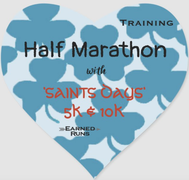 WITH ‘SAINTS DAYS’ TRAINING PLAN STARTS TODAY. RUN: This is the week you start to pick up the mileage a bit. Although it seems you are expected to run 10-minute miles ("run 35 min or 3.5 miles" translates mathematically to running 1 mile in 10 minutes), you can run at a slower or faster pace. Be sure to cover the scheduled mile distance, which will then extend over a longer time period if your pace is slower. Of course, if you are able to run comfortably at a faster pace, you will finish in less time. The mid-week runs in this first month of training are intended to be easy and prepare you to cover the long runs at each week’s end, which will gradually increase in length. The goal is to be physically and mentally prepared to run the entire 13.1-mile race distance at the end of the 18-week duration plan. There are no speed drills scheduled in this plan because it is for beginners, whose goal is to cross the finish line. The emphasis for beginners is to mentally and physically prepare to complete the entire distance rather than achieve a goal finish time or running a specific pace. However, there will be an opportunity to work on increasing speed for those interested. In week 5 the schedule will post an option to add hill repeats added to slightly shorter Tuesday runs. Running hills helps to build leg strength, which translates to greater speed. Another informal option (it won’t appear on the schedule) is to slowly develop a race day strategy by performing a simple progression run each Thursday. The run is roughly divided into two segments of equal distance. The first half distance is covered at an easy pace. The second half is covered at a slightly faster pace, such that it is finished in less time. For example, if the initial 1.5 miles of a 3-mile run is run in 15 minutes, the second 1.5 miles distance should be finished in under 15 minutes. Why use a progression run to train this early in training? A previous blog post discussed this topic.. WALK: This week’s schedule is a repeat of Week 1, in which the long walk on the weekend is performed at an easy pace. Going forward, in Week 3 and the remainder of the training plan the pace will be brisk. Your goal should be to take 100 steps per minute while walking briskly. Work up to that speed if you can’t manage it now. The High Intensity Interval Training (HIIT) sessions on Thursdays represent a form of speed drill, to help prepare you for a race day pace. During the high intensity intervals, aim to increase your pace above a brisk walk (more than 100 steps per minute). A previous blog post discussed faster walking paces in greater detail. RUN & MOVE HAPPY! Training plans can be downloaded, and are available in the RESOURCES page. https://www.healthcorps.org/what-does-brisk-walking-mean/ https://www.runnersworld.com/training/a20630818/hill-running-workouts-for-speed/ CHALLENGE YOURSELF TO BOOST FITNESS UNTIL SPRING BEGINS EARNED RUNS ANNUALLY PROMOTES A NUMBER OF SUMMER CHALLENGES. One of them is a “Summer Streak”. The challenge at first was to run at least one mile every day, then expanded to a run or walk streak, then morphed to a streak of ANY activity that could safely be performed daily, from Memorial Day to Labor Day, the unofficial start and finish to this season.
I inadvertently started a walk streak last year on January 3, 2019. The weather forecast over the next several days had promised to deliver full sun, and possibly clear sunrises and beautiful sunsets. I walked twice a day to enjoy both. By January 7 that year, I had the beginnings of a streak and decided to continue as long as possible. On January 10, the idea of a formal Earned Runs streak materialized. In 2020, starting a WINTER STREAK CHALLENGE again seems like it might be an appealing activity, particularly to those not interested in training for a spring race. Why spend the cold winter months repeating the same activity day after day? Because the cold dark season may not offer much motivation to accomplish huge fitness goals, especially those involving the performance of outdoor exercise. And the gym is busier than ever at this time of year. Combining these two observations, I think winter would be perfect time to lay down a challenge to adhere, either indoors, outside, or both sites, to an uncomplicated exercise program that doesn’t require a huge mental effort. Just get up every day and physically ‘do’ that one activity! Walk or run, or spend a set time on a stationary bicycle, elliptical machine rowing machine, or stair stepper. If swimming is your thing, get in the pool daily. Or promise yourself you’ll perform a mobility routine (myrtl’s) each day. If push-ups are intimidating, do a handful (5) each day. Consider a one 1-minute plank session. You get the idea… Start today, or set January 19 or 20 as DAY 1 if advance arrangements are required, and end with the equinox, March 19 (the first day of spring in the northern hemisphere and fall in the southern hemisphere) in 2020. If the rest of life is complicated for you now, consider choosing this simple, no-brainer, streak challenge for what remains of the winter season. At winter’s end, you’ll have accomplished at least one fitness goal if you stick with it. RUN & MOVE HAPPY! ...FROM EARNED RUNS; OPPORTUNITIES TO HAVE FUN AND GAIN FITNESS PLAN NOW BY checking out potential Earned Runs EVENTS you can custom design for yourself, solo and with others! OR find an organized event to run near these dates.
February 4, 2020 ’THE BRIGHTENING’ PHOTO FIX Earned Runs first brought attention to the concept of a change to seasonal naming/timing based on the calendar trend in available amount of daylight for outdoor adventuring in a blog post several years ago. Not everyone will agree that their days begin to brighten starting February 4, considering wintertime is dragging on in the northern hemisphere, but it’s a positive perspective from which to view the coming weeks of February through May. Today you might begin taking daily photos of the same area of the sky as you venture out each morning or evening for a walk or run. A comparison over several weeks may prove this point! February 14, 2020 ‘SAINTS DAYS’ St. Valentine’s Day 5K Whether or not you are participating in an Earned Runs HALF MARATHON WITH ‘SAINTS DAYS’ TRAINING PROGRAM (a tune-up training race is scheduled at this time), you might wish to join others in nearby competitions. The feast celebrates love in all its forms, not only romantic, but that which holds friendships and families together too. Organized races usually are held on weekends, and because the day falls on Friday in 2020, the following Saturday and Sunday will be the best days to search for convenient events. March 8, 2020 DAYLIGHT SAVING DASH Celebrate the start of the time change that adds daylight to the later portion of the day with a distance race or walking event of 1 mile or 5K. Your clocks should be set to “spring forward” at 2am to 3am. Run or walk your event early in the morning at the later SUNRISE time, or in the evening at the later SUNSET time. https://www.timeanddate.com/time/change/usa?year=2020 March 17, 2020 ‘SAINTS’ DAYS’ St. Patrick’s Day 10K This is a 6.25-mile distance race or walking event that can be completed on St. Patrick’s Day (3/17/20) or any day through the preceding or upcoming weekend with your free Earned Runs bibs. Those training to run a Half Marathon in May with the Earned Runs plan will have this race on the schedule. I have always felt races at this time have kicked of the new running year for me. Living in the northern USA. It’s on this day that I begin to hope no more snow will fall. March 19, 2020 NORTHERN HEMISPHERE FIRST DAY OF SPRING WARM-UP (5- 10 miles) Just like the position of the sun in the sky and the increased sunshine help to warm the earth and melt the frozen ground, runners can get warmed up for the new running season with an event that’s not a short 5k or a longer distance half marathon. Pick a distance between 5 and 10 miles and plan to run it about 10-15% slower pace than you would run a half marathon. (a 10-minute mile pace in the half would mean an 11-minute mile pace in this event). https://www.almanac.com/content/first-day-spring-vernal-equinox March 26, 2020 (or later, March 30 through April 3, for first HOME game openers) MLB OPENING DAY MASH-UP (any distance) If you’re a runner or walker who also loves major league baseball, mark the start of the season with a personal race, run, or walk using Earned Runs Bibs. Create an annual ‘ceremony’ to solemnize your team’s run at a championship this year with your own GOOD LUCK send-off effort. All MLB teams will see action on the first official day of the season. According to a NBSsports.com article, highlighting the 2020 season’s schedule are:
Night game? By setting your event start time prior to the first pitch, you can head to the favorite local team hangout after finishing and watch the live action with other fans. Afternoon game? By setting various start times to coincide with individual lunch breaks or quitting times, you and friends can cover distances that fit specific schedules. Make a point to wear fan gear. Then meet later up to watch the game or celebrate/commiserate afterward. https://mlb.nbcsports.com/2019/08/12/mlb-announces-2020-schedule/ https://www.usatoday.com/story/sports/mlb/2019/08/12/mlb-opening-day-2020-regular-season-schedule/1987709001/ April 1, 2019 Wednesday APRIL FOOL’S DAY No Fooling, ‘IN IT to WIN IT! 50’ (any distance) Demonstrate that you’re no fool. Get out today and test your resolve not to be silly about health. Run or walk a seriously happy 50 MINUTES. April 3, 2020 Friday US NATIONAL WALK TO WORK DAY 30 This national day was officially declared by US Department of Health and Human Services Secretary, Tommy G. Thompson, in 2004. Participating in this holiday means you are willing to spend 30 minutes walking. If you tend to ‘work’ at a coffee shop on many days, that’s a great spot to finish! http://www.holidayinsights.com/other/walk.htm https://www.timeanddate.com/holidays/fun/walk-to-work-day April 20, 2020 CELEBRATE BOSTON & RUNNING IN THE USA; THE TRADITION RUN (any distance) The Boston Marathon is run annually on the day set aside in the Commonwealth of Massachusetts as Patriot’s Day, the third Monday in April. This race was the original marathon to be patterned after the modern Olympics contest of 1896 and was first run in 1897. On this day in the United States, anyone can celebrate the tradition of competitive long-distance running. Without necessarily covering 26.2 miles, achieving a qualifying time, or being in that location, run or walk in sprit with those in Boston with a personal custom race + Earned Runs bib. Start your race at the push-rim wheelchair start- times for men and women) or the elite women and men start times to coincide with the real time race. Or, start much earlier to finish in time to watch all the action on TV. https://www.baa.org/races/boston-marathon https://www.boston-discovery-guide.com/boston-event-calendar-april.html [DON’T LET INTER-CITY MARATHON RIVALRY GET IN YOUR WAY. Today needn’t be about the city of Boston itself, but about the running history which began there with that first event in 1897.] April 22, 2020 50th Anniversary EARTH DAY EARNED RUN (any distance) Feel free to name this anything you like, but since Earned Runs promotes earth-friendly running, we will make a claim to some ownership. This is one of the best excuses to gather your friends and neighbors and walk-run your way along a favorite running course, or one that sadly needs a lot of effort at beautification, cleaning up trash as you go. Make Mother Nature proud! May 5, 2020 DAY OF 5THS FIVE (5miles or 5 K) Of course, today is the celebration of the Cinco De Mayo (CDM) holiday, but this date can also be an opportunity to be happy about the 5th day of the 5th month, and your ability to finish the 5th kilometer or the 5th mile of a personal Earned Runs race, run, or walk. Afterward, join everyone else enjoying the festivities of CDM! It falls on a Tuesday in 2020, so the celebrations may begin earlier on the preceding weekend, Friday through Sunday May 1-3, 2020! May 10, 2020 MOTHERS CHOICE COMPETITION (5K) Moms, since your family is often willing to do what YOU want this weekend, ask everyone to accompany you on a nature walk-run, without electronic devices. Keep the pace at slow enough to allow laughing, joking, talking together. Request that they wear Earned Runs bibs decorated like Mother’s Day cards. Estimate the money that would have been spent on cards and treat everyone to an icy dessert (slushy, ice cream cone, popsicle, etc.) or make a charity donation. Since the full weekend is yours to command, there is plenty of time to enjoy other activities as well. May 25, 2020 MEMORIAL DAY REMEMBRANCE (mile, 5K, or 10K) This federal holiday is for remembering the men and women who DIED while serving their country in the Armed Forces (compared with Veterans Day, in which the SERVICE of all U.S. military, veterans and active, is celebrated). It’s a solemn day. US flags and wreaths are placed at grave sites. Many remember others who have passed away in their lives, including non-military. One way to do this by running or walking at quiet times, like sunrise or sunset, when we can reflect back on their lives. Consider celebrating one, several, or ALL the days this year with the Earned Runs community. RUN & MOVE HAPPY! 5k & 10K TRAINING PLANS START TODAY JANUARY 12RUNNERS AND WALKERS are you ready to begin training? If so, commit to performing the pre-run hip girdle mobility (Myrtl’s) and flexibility (pre-run dynamic warm-ups or “DWarmups”) routines, post run stretches, and foam rolling work that is incorporated in this plan along with the days of running. Why? To stay heathy by preparing for and recovering from the mechanical stresses of training. Links to descriptions and demonstrations of the routines can be found on the RESOURCES page.
The STRENGTH training, aimed at helping to correct muscular imbalances and prevent injuries, can be simple. Check out the exercises that are available through links on the RESOURCES page. Although only one session is scheduled each week, you can add another, if desired. One lower body and one upper body plus core exercise sessions can be included each week rather than every other week if this is a usual practice. CROSS TRAINING can be incorporated into your training schedule on days you are not running or walking. The sessions are intended to help maintain base aerobic physical activity capacity and rest the legs to prevent overtraining. The idea of the plan is to focus on building running/walking endurance and some speed with progressively longer distances and HIIT workouts, and saving the best efforts for these sessions. Cross training should be conducted at moderate intensity levels. The RESOURCES page has links to suggested routines for these workouts, a few include video demonstrations. Most trainers will say it’s good to mix up or rotate exercises, such that you never quite become comfortable performing them. You can also go online and find versions that differ from the tried and true classic exercises posted by Earned Runs. Many can be made easier or more difficult. Even though balance exercises are not specifically worked into the program, improving balance is another injury prevention strategy. Any lower body exercise that can be performed with one leg will increase the difficulty and also work on balance, especially if it’s done standing. Variations that incorporate stability balls can add balance work to many other exercises. To avoid falls, especially if you feel unsteady, make sure you have nearby stable support structures while performing any single-leg or balance exercises. In watching video demonstrations produced by trainers for young and fit athletes, like football players, there are cautions that even sport elites can be a bit unbalanced initially. After a break from performing walking lunges I tend to tip to one side when starting again, especially when combining upper body rotation with this move. Balance work can improve running and walking efficiency, so don’t shy away from single leg strength routines; you’ll get twice the benefit. A tip given to me by a physical therapist is to perform balance exercises after long runs, on tired legs. She said that being able to maintain proper running/walking form is essential when fatigue sets in; it’s at this point that we need the small steadying muscles of the body to keep us moving in an upright linear direction. Wobbling for miles because of weak hips or a tired core on rubbery legs is a set-up for the development of soft tissue and joint problems. CLASSIC LOWER BODY exercises that can be performed without extra weights include: Lunges: forward, reverse, side/lateral, and forward with rotation Bridges/hip raises: both feet on floor (easier), single leg (harder); on stability ball (harder) Squats: front and split Side leg raises: without (easier) or with a resistance band (harder) Clamshells: without (easier) or with a resistance band (harder) Resistance bands walks: lateral and “box” stepping CLASSIC UPPER BODY exercises that can be performed without extra weights include: Push-ups (variations) Triceps dips Floor “Y’, “T”, “W” and “I” arm raises; done on stability ball (harder) https://www.youtube.com/watch?v=nHfkpPYSgzs CLASSIC CORE/STABILITY exercises include: Planks: prone, sideways, supine; there are many easier/harder variations Dead bugs: without (easier) and with a stability ball (harder) Mountain climbers (variations) BALANCE exercises: One leg stand: harder on unsteady surfaces (folded towel, pillow, Bosu ball) or with closed eyes Step downs: front, side, and back http://www.knee-pain-explained.com/knee-strengthening.html Most other training plans will recommend similar supportive work on mobility, flexibility, balance, and strength, but actual routines WON’T BE LISTED ON THE DAILY/WEEKLY schedules. The importance to running of doing this work, will be included in the notes of these other plans, but mostly the details of when and how to incorporate this work into training regimens is left up to individuals. NOT SO WITH EARNED RUNS PLANS! EARNED RUNS plans strongly EMPHASIZE the IMPORTANCE of this work to INJURY PREVENTION over the course of the training period by scheduling these components on specific days. However, you can customize the plan and change things up to meet your needs. For example, the "Dead Bug" is a safe and effective (abdominal and back) core exercise scheduled every one day every week, but other exercises can be substituted for Dead Bugs and can be performed any on day of the week. Your 2020 training season officially begins! RUN & MOVE HAPPY! Runner HALF MARATHON WITH 'SAINTS DAYS' Training Plan Part 1 Walker HALF MARATHON WITH 'SAINTS DAYS' Training Plan part 1 JANUARY-FEBRUARY 2020 MAY BE THE BEST FOR JUMP STARTING THE YEAR ELITE FITNESS EXPERTS MAY OFFER ADVICE ON GEAR, including shoes, apparel, and exercise equipment that might help motivate regular physical activity. As an everyday, recreational athlete trying to find personal motivation I have identified a single inexpensive item that reliably energizes my running and walking efforts throughout the year: a print issue of Runner’s World magazine.
This year I happen to have a gift subscription. Previously I would seek out the current issue in a Barnes and Noble bookstore, buy it, and go through it cover-to-cover to juice-up my running (later only walking) efforts. In my heavy travel days, I found it at airport news stores. No matter how I obtained a copy over the years, however, the effect of having and reading it remains the same: inspiration. Every 2 months (6 issues per year) the staff puts out content that has a crazy way of making me impatient to get out and try what I learned after reading nearly every square inch of print, even the ads. I can’t explain why the magazine’s paper copy has this psychologically stimulating effect and the online digital version doesn’t. It’s a mystery to me. Actually, because for so many years (this is mostly still true) I could not participate in the races and events highlighted by the magazine, its material contributed to the idea behind my founding Earned Runs. Back then I dearly wished to experience the running life as described in RW but could not find my way to fully realizing this aspiration. The expense in money and demands on time were more than I could afford. My family and career would not accommodate it then; now physical limitations require that my adventurous spirit be quieted a bit (cost is always a consideration). With the bibs of Earned Runs I gave myself opportunities to compete, at least with myself. Fortunately, even after 40+ years of only running, then only walking due to injury, and now running and walking to prevent injury, purchasing and reading one issue at a time still provides motivation and injects excitement into my fitness life. Below is a sampling of the sections of the January-February 2020 RW that make it a valuable piece of gear for me: Sections:
For athletic attitude boosting this first magazine of the year might be the best. Try scanning an issue before purchasing one to keep for reference. I’ve tried reading RW at a newsstand and not taking it home, but this practice doesn’t provide the same power. Consider buying just one print copy of Runner’s World or another fitness magazine that meets your sport needs for the first couple months of the new year as a piece of gear. Rather than just serving merely as interesting reading material it could add an anticipatory thrill to your athletic training efforts. RUN & MOVE HAPPY! CHALLENGE YOURSELF WITHOUT TRAINING FOR A RACE; CHECK IT OFF! To avoid the usual drop-off in adherence to health-related New Year Resolutions, this year I created a list of activities and practices to be performed or followed regularly, which reflect lifestyle guidelines suggested by medical science experts to benefit physical and mental health. Not necessarily all squeezed into one day but included within a weekly schedule.
I created a personal general health ‘to-do’ list that I hope will substitute for separate diet, exercise, sleep, and meditation plans; one that I realistically can adapt as needed and follow throughout a full calendar entire year. This to-do list doesn’t replace other goals, but rather organizes and tracks my adherence to regular practices that I view as generally beneficial along with components of routines that will be performed as part of official training programs. As an example, strength training is something I should always be incorporating into a weekly physical fitness regimen, but which also will formally be required by my half marathon plan. If follow the half marathon training plan, the days I strength train can be checked off the list as completed. The idea was borrowed from an Earned Runs FALL CHALLENGE (The House Cup) and altered to make it easier for me to follow in 2020. Initially the House cup Challenge wasn’t a good fit because it introduced too many new practices. Since that first attempt in 2017, I’ve managed to perform most activities regularly but not as nearly as routinely as recommended by health experts. In this new year (it’s also a new decade) I am anticipating that the revised check list of this 2020 WINTER CHALLENGE helps me to consistently do what’s needed to maintain and even improve my health and increase longevity. The activities ideally will transition over the months to become nearly automatic life habits that maintain a strong and, hopefully optimally, functioning body and brain, and globally result in a healthier me! Identifying your own habits Healthy habit identification and adoption is an extremely individualized project that requires more than a little effort and trial-and-error testing. Remember the last time a friend who accomplished an amazing physical or health transformation enthusiastically described the secret to their success? Performing 50 burpee exercises at 4am each morning, sleeping 10 hours per night, or drinking pre-meal ice water ingestion for example? Fill in the blank; another person’s habits won’t necessarily appeal to or be right for everyone. Numerous thoughtful as well as crazy suggestions for healthy living can be found online, from which ideas can come for personal use. Readers will need to do homework to investigate the safety and efficacy of advice that falls outside the bounds of common sense. Jason Leenaarts wrote an article published by medium.com in late November 2018 that offered 43 ways to lose excess fat, which, for many would be a very healthy move. Included are tips to “skip snacks”, fast for 24 hours each week, not eat after dinner, and “eat-in”. The fasting recommendation would require a bit of investigation to determine whether or not it’s a safe practice for individual use, but the remaining 3 ways, obviously, could be accepted without much worry. It’s one place to get ideas if body re-composition is a new year resolution goal. Search online for more articles if Leenaarts’s piece doesn’t do it for you. Be aware that even if just one idea can come from a source, it’s a winner. Each item on my personal WINTER 2020 CHALLENGE Healthy Habits list has been assigned a positive (+) or negative (-) point value, depending on its relative importance to my daily health routine. I hope to accumulate about 100 points each week, roughly, and 1000 points over 10-12 weeks, at about the end of March. I’ve given myself a bit of wiggle room, so that a week or two of illness, vacation, or unexpected events won’t terribly disrupt the plan and cause enough discouragement to abandon it. I’m not sure the challenge’s math makes sense or works to achieve the intended results, so I am ready to re-assign point values and weekly goals as need after starting it. I added quite a few activities that aren’t physically demanding, and fear that I will be able to accumulate sufficient points each week without doing the tough stuff. But still I want to become habituated to a few easy activities that I frequently skip (taking daily vitamins for example), as well as the those that I tend to put off because of the higher intensity effort involved (swimming laps for aerobic fitness). This personal plan can be downloaded to use as guideline in designing a New Year resolution plan for 2020, one specially customized for your personal use to improve health and fitness. It can serve as an alternate WINTER CHALLENGE for those who do not wish to train for a spring goal competition, or a tool for organizing multiple health and fitness activities for those who are training for a race. Perhaps it will inspire adoption of just one vital habit that’s been on your health ‘to do’ list for a while. RUN & MOVE HAPPY! My personal Winter 2020 Challenge: NEW YEAR Healthy Habits daily tally sheet will also be avavilable on the RESOURCES page HALF MARATHON 2020 WITH ‘SAINTS DAYS’ 5K & 10K RACES TRAINING PLANS FOR RUNNERS AND WALKERS WILL START ON JANUARY 12.
DRAFTS OF PLANS, PARTS 1 & 2, ARE NOW AVAILABLE. Check them out if you are considering taking on this 13.1-mile distance race challenge. Each plan prepares you first for a 5k race that would be scheduled in mid-February, near February 14, St. Valentine’s Day, and in mid-March near March 17, St Patrick’s Day. Should you decide to not continue with training after the 10K, you still will have been able to compete in events that are celebrated with fun weekends in the later winter months. Training for them can help you get through theses oftentimes dreary weeks while maintaining fitness discipline. Links to the draft plans are provided below and will be on the RESOURCES page. RUN & MOVE HAPPY! Runners: 2020 Half Marathon Training Plan Part 1 draft Runners: 2020 Half Marathon Training Plan Part 2 draft Walkers: 2020 Half Marathon Training Plan Part 1 draft Walkers: 2020 Half Marathon Training Plan Part 2 draft A THOUGHTFUL APPROACH AND DELAYED START MAY BE HELPFUL. Are you looking for a 2020 challenge that motivates improved fitness, better nutrition, and overall boosts health? A way to stick with the several New Year (NY) Resolutions that you must repeatedly make every year, it seems, because your efforts to stick with them annually cease after a few months?
NY fitness resolutions tend to be broken after about 5-6 weeks if Gold’s Gym surveillance information of its members’ activities is believed. The company famously tracks the fall off in gym attendance each year (since 2013) and previously identified the second week in February as the point at which the decline begins. The date that drop is most precipitous has been variously pinned down as February 9 (2016) as well as February 18 (2014) and is referred to as the “Fitness Cliff”. A 2018 article posted by independent.co that used Strava company UK data to calculate “Quitter’s Day” indicates it’s much, much earlier. As soon as January 12, Strava’s research shows, motivation begins to falter! A 2016 piece from CBSnews.com on the topic reported that Gold’s survey of member excuses for falling off the cliff included lack of time, poor planning, and frustration at not realizing early results. Some members admitted they forget why they started! Others indicated they found it easier to fall back into old patterns. Another reason for decreased motivation to exercise, especially indoors, may be that in mid-to-late February (in the northern hemisphere) the days tend to brighten with daylight time beginning to increase. Weather patterns start to change as well, such that in some locations the potential for consistently improved outdoor conditions exists. The reason for less resolve to hit the gym may lie outside rather than inside ourselves. My theory is that the ‘brightening’ and better weather experienced with the approach of meteorological spring on March 1, add to the initial fall-off in commitment to fitness resolutions that require gym time. In the quiet and relative darkness of winter and early spring months, when indoor activities are most comfortable and safe, we might be content to stay regimented and on track with January resolutions. However, the pace of life quickens in spring. Earlier sunrises and later sunsets, warming temperatures, and less need for restrictive and heavy protective clothing allow us more opportunities to sensually interact with newly awakening surroundings beyond the gym. Once the great outdoors is again made available for exercise, we understandably may begin to ignore our January commitments to important but more regimented fitness routines. Rather than follow NY resolution-inspired training programs in buildings and on machines to gain needed endurance, strength, balance, and mobility, we choose to fall back into old patterns of mostly free-style aerobic exercise outside, with others. The wheels can completely come off the NY resolution bus in summer when planning and scheduling are put away for impromptu games, fun competitions, group outings, and more. Fall might nudge us back to formal training for goal races, when gym workouts are necessary. By the end of autumn, after an easy Turkey Trot race, we may end up with no plan until January, coming full circle after the excesses of holiday celebrations, when all new NY resolutions become necessary. Based on reporting about the “Fitness Cliff” and “Quitters Day” and my Brightening theory, there may be a method to successfully maintain NY fitness resolution momentum all year. The best approach might involve:
Check out the 2020 WINTER HEALTH program I am drafting for my personal use in next Wednesday’s blog. I plan to have it ready for January 12! RUN & MOVE HAPPY! https://www.today.com/health/beware-fitness-cliff-4-ways-stay-motivated-gym-t70151 https://www.prnewswire.com/news-releases/golds-gym-identifies-february-18th-as-the-fitness-cliff-the-day-when-new-years-resolutions-die-243947051.html https://www.cbsnews.com/news/dont-fall-off-the-fitness-cliff-stick-to-new-years-exercise-goals/ |
BRIDGE TO PHYSICAL SELF
Running, walking, and fitness activities enable us to experience our physical selves in a world mostly accessed through use of fingers on a mobile device. AuthorEARNED RUNS is edited and authored by me, runner and founder. In 1978 I began participating in 10K road races before 5Ks were common. I've been a dietitian, practiced and taught clinical pathology, and been involved with research that utilized pathology. I am fascinated with understanding the origins of disease as well as health and longevity. Archives
November 2023
CategoriesNew! Search Box
Earned Runs is now searchable! Check it out...
|

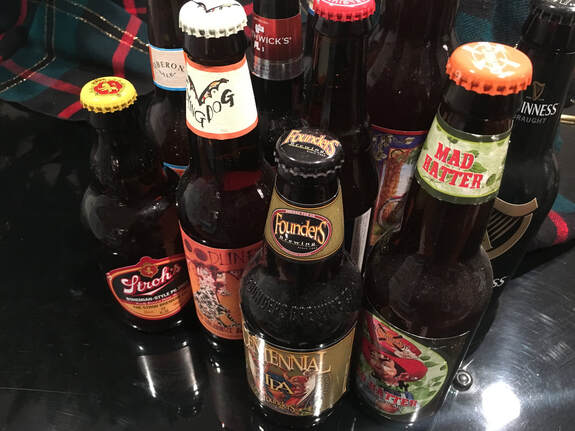


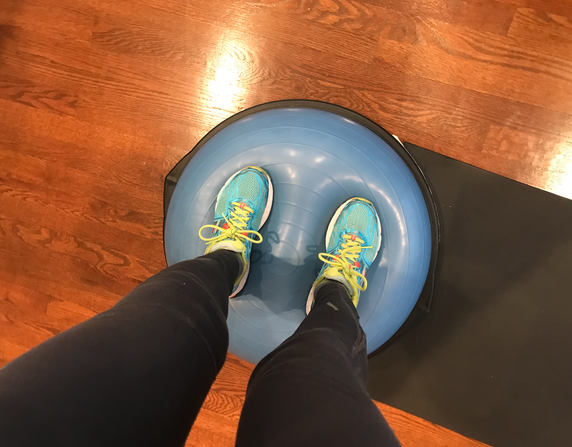

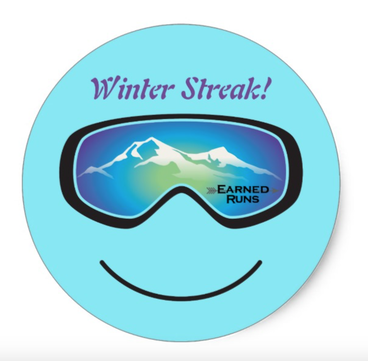
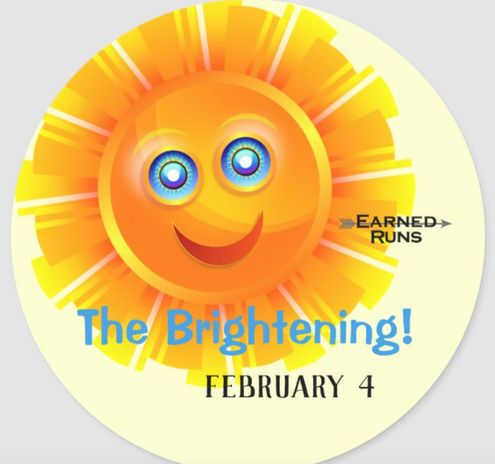
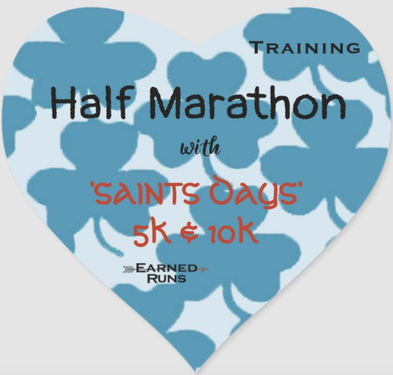
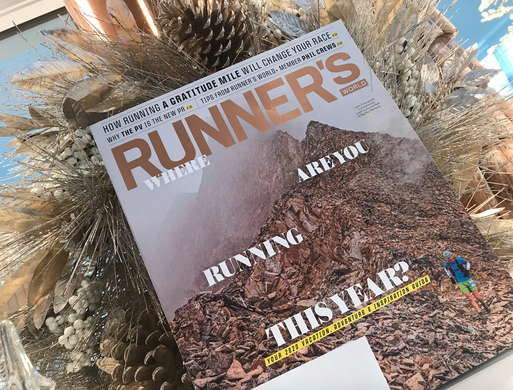

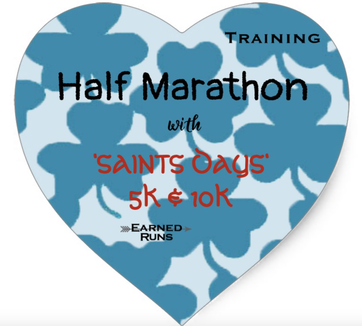


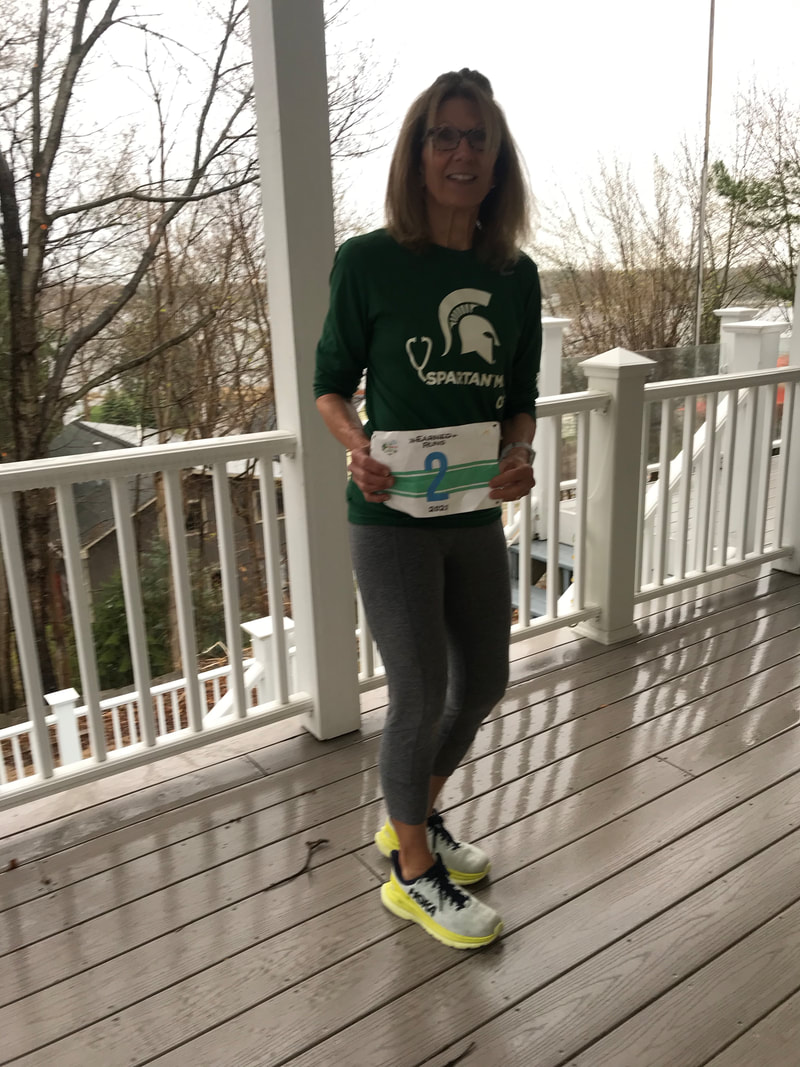
 RSS Feed
RSS Feed